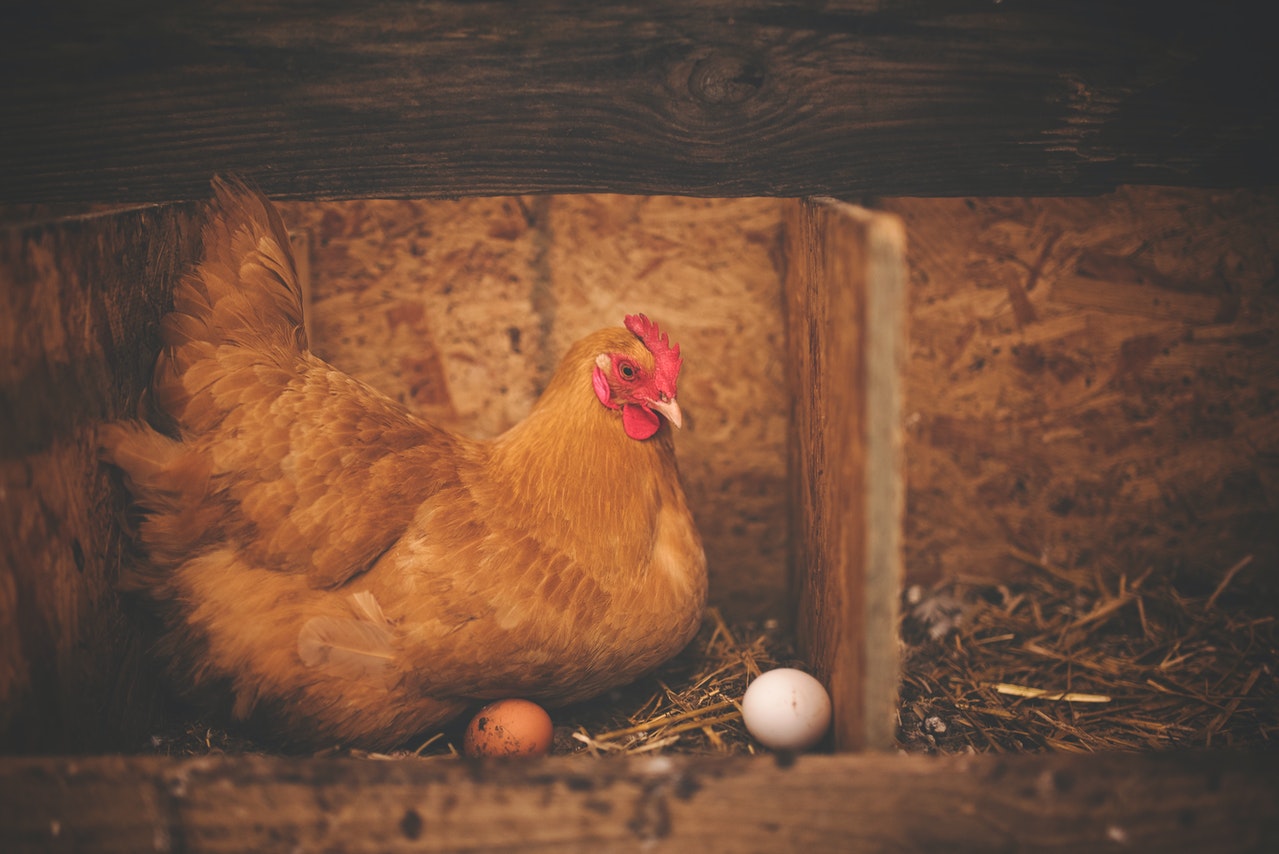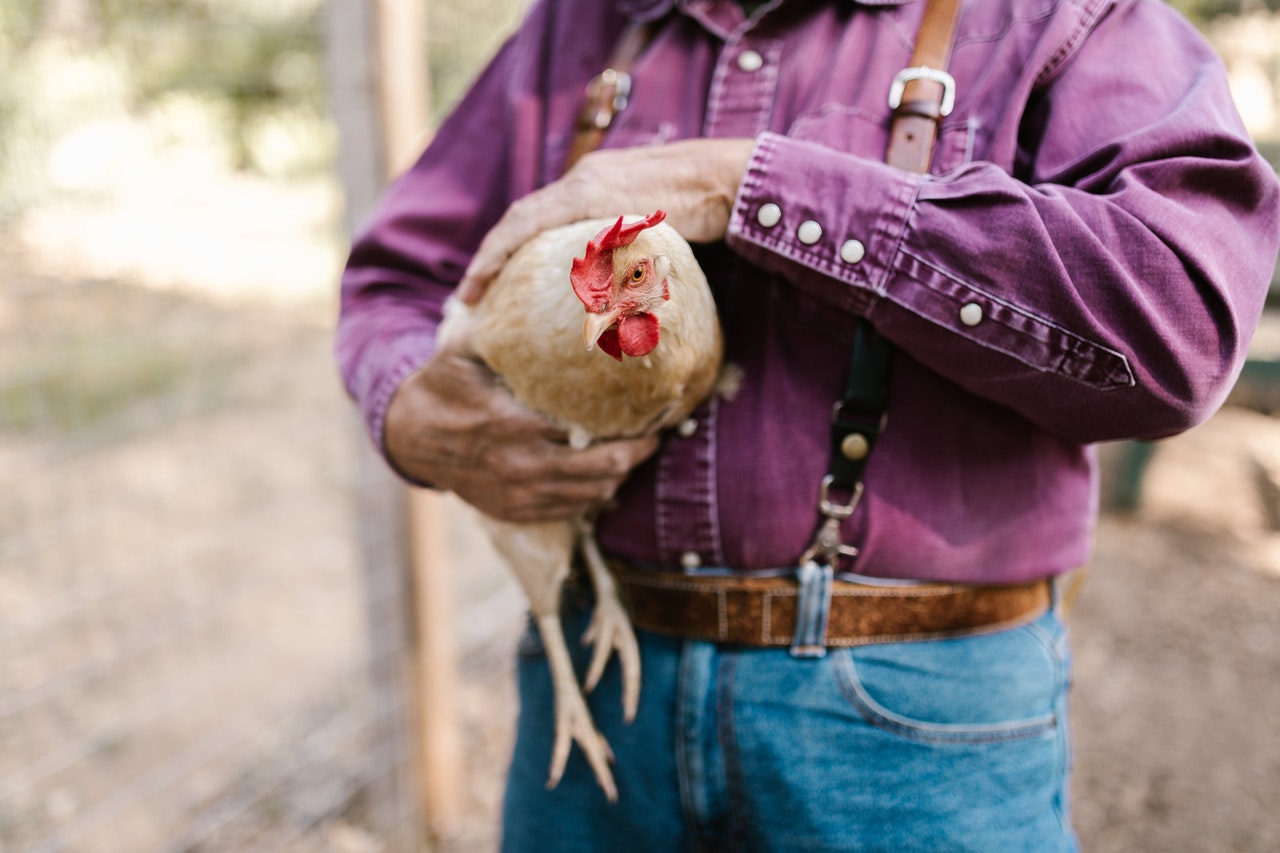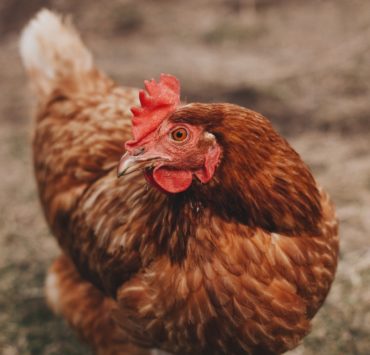
If you are a chicken enthusiast and have a couple of hens in your flock, then you’ve likely encountered one that’s gone “broody.” Now, this isn’t necessarily a problem per se if your goal is to hatch eggs the good old-fashioned way. However, it can be problematic if you only want eggs for consumption.
If all this sounds new to you, you’re probably wondering: What is broodiness in chickens, and how can you fix it? This guide explores the answer to these questions and more.
What Is a Broody Hen
Broodiness in chickens is an instinct. There’s no foolproof way of knowing what drives them to become broody. It may also be a combination of maturity and hormones. When a hen “goes broody,” all she wants to do is sit on her clutch of eggs for an extended period, keeping them warm until they eventually hatch.
When broodiness in hens kicks in, they don’t like to venture anywhere far from her clutch. All they want to do is sit on their eggs and allow their body temperature to rise. In the process, they consume far less food and water than they ordinarily would. You can see how this would be a problem in the heat of summer.
As inhumane as it may sound, the only solution to this predicament is to break your hen’s broodiness. That way, she can eat and drink whenever she feels hungry or thirsty without worrying about neglecting her eggs.
Another issue owners of broody hens often grapple with is – a significant reduction in egg production, especially if she starts hoarding eggs from other hens just to feel that their nest is full. A hen adopting other hens’ eggs is not an unusual phenomenon in poultry and other avian species.
Once you’ve got a broody hen on your hands, there’s no stopping her. She’ll sit on a bunch of eggs and become a little (sometimes, very) aggressive when you try to reach down under her to grab hold of some eggs.
Broody Breeds of Chickens
It is worth mentioning that while any breed of hens can become broody, certain breeds are notorious for it. If you have a Silkie, you know what we’re talking about. Silkie hens are famous for being broody. People who want to hatch new chicks choose Silkies for this specific purpose. These hens will sit on just about any clutch of eggs they come across and make excellent mothers.
Other poultry breeds that are known to go broody from time to time include:
- Wyandottes
- Sussex
- Plymouth Rocks
- Orpingtons
- Faverolles
- Cochins
- Brahmas
- Australorps
As broody as these breeds can get, none of them even comes close to the broodiness that Silkie hens exhibit. The level of broodiness varies widely depending on the bird in question. Some breeds rarely, if ever, brood in their first year of laying. However, they become excellent brooders in their subsequent years. Examples of chicken species that exhibit this deferred broodiness trait include Fayoumis and Chanteclers.
In case you’re wondering how to put fertile eggs under a broody hen, it’s a fairly easy process. If your hen is cooperative, take your fertilized eggs, gently lift the hen, and place your eggs underneath. If she’s a little aggressive, it might be better to wait until she leaves the nest to eat or drink before placing the eggs.
If you’re not particularly crazy about broody hens, below are some of the least broody chicken breeds.
- Mediterranean breeds such as Sicilian Buttercups, Minorcas, and Leghorns
- Continental breeds such as Polish, Lakenvelder, Hamburg, and Crevecoeur
- Bantam breeds such as Sebright and Rosecomb
- Hybrid layers such as California Whites, Reds, Red Sex Links, and Black Sex Links
How to Tell if a Hen Is Broody
By this point, you’re wondering whether there’s a foolproof way of identifying broody hen behavior. The good news is – there is!
One easy way to spot a broody hen is if she becomes aggressive when you try to reach for the eggs underneath her. It is not unusual for hens to be a little resistant when removing the eggs, but if it turns into outright agitation, often accompanied by broody hen noises like a snake-like hiss or deafening squawk, chances are, you’re dealing with a broody chicken.
On the other hand, when attempting to take the eggs underneath her, if she takes off running, then she’s not broody. A little annoyed, perhaps, but definitely not broody.
Broody chicken may also peck at your hand when reaching down for the eggs underneath them. You might want to wear gloves if you suspect broodiness in any of them. Other ways to spot a broody hen include:
- Reluctance to get off the nest even when there are no eggs present
- Missing belly and chest feathers
- Pale wattles and comb
- Large and smelly droppings
- Lying in a flattened-out posture on the nest
- Reluctance to put their feet down when picked up
- Low food and water consumption
- Cluck at her chicks when they get too close to the hatch
You might ask: How long can a broody hen leave her eggs? Broody hens hardly ever leave their clutch of eggs. They remain glued to it, leaving only once or twice a day for a quick bite or drink before returning shortly after.
How Many Eggs Can a Broody Hen Sit On
The number of eggs a broody hen can sit on depends on her size relative to the clutch. Generally, hens can comfortably cover and keep warm up to 12 eggs at a time, proportional to their size.
For instance, if you have a broody bantam, she can comfortably sit on a clutch containing up to 12 bantam-sized eggs. If you have a larger breed of fowl, the hen can handle between 12 and 15 eggs of the size their breed would ordinarily lay.
Likewise, if this larger breed of fowl were to sit on bantam-sized eggs, you would be looking at up to 20 eggs at a time.
How Long Do Hens Stay Broody
So far, we know that a broody hen is committed to hatching chicks. She will sit in her nest for the 21-day incubation period until the eggs hatch. The question is, once they hatch chicks, do the broody hens go back to “normal,” or do they stay broody?
The state of a hen’s broodiness is controlled by various factors, including hormones, the existing lighting conditions, and instinct. Ideally, once the 21-day brooding period elapses, the broodiness should stop. If she continues to sit on an empty nest or if there are no fertile eggs available for her to sit on, a hen can stay broody long after the three-week incubation period.
As harmless as this behavior might seem, it can harm her health in the long term and can cause problems for the other hens in the flock.
Remember, broody hens eat, drink, and eliminate waste once or twice a day at the most. They consume up to 80 percent less food per day than they usually would, and over time they lose a significant amount of weight. Their feathers also become noticeably pale. If they continue this way, they may end up starving themselves to death.
These dramatic shifts in their day-to-day routine are only tolerable in 21-day stints. However, prolonged stints are detrimental to their health. For this reason, brooding behavior in hens that extends for more than three weeks needs to be discouraged by “breaking” them.
How to Break a Broody Hen

It’s a common joke that broodiness is contagious in the chicken rearing world. If you don’t curb this behavior in one hen, the others will soon follow suit. You’ll end up getting fewer eggs with each passing week. Breaking a broody hen is the only way to keep her and the rest of the flock in check. Below are six foolproof ways to do it.
1. Remove the Broody Hen
It goes without saying that the first thing you’ll need to do is remove the broody hen from the nest. Simply lift her off her nest and take her out to the yard to mingle with the rest of the flock. You can try enticing her to stay outside by offering her some tasty treats. You may have to do this several times a day until she catches on and her brooding instinct disappears.
Keep in mind that she will try to peck at you when you lift her. To protect your hands, it’s always a good idea to have gloves on when doing this.
You might ask: When is the best time to move a broody hen? We’ve found that the best time to do this is in the wee hours of the morning or two hours after sundown.
2. Close off the Nesting Area
This second step is what it sounds like. You need to cordon off the area she has picked to nest her non-existent clutch of eggs. That doesn’t mean she won’t try to re-open the nesting area. Chances are, if she keeps trying and failing, she’ll eventually stop being a broody hen.
If you have more than one broody hen on your hands, be prepared to shut down multiple nesting areas. Broody hens are usually quite motivated to hatch chicks, even if it means stealing another hen’s nest to do it.
3. Make the Nesting Environment Hostile
If the first two strategies we’ve detailed so far still don’t work, it’s time to pull out the big guns. You’ll need to make their nesting environment uninhabitable.
One method that always works is sneaking a frozen water bottle under her while she’s sitting on her imaginary eggs. The cold shock to the system is usually sufficient to instantly “switch off” the brooding instinct. A cold bath is just as effective in breaking a brooding hen.
4. Get Rid of All the Nesting Material
This one is a no-brainer. Remove all the nesting material if you don’t want your hens to remain broody. Needless to say, this would be difficult to do if you have a large flock. However, it shouldn’t be too hard if you have a handful of hens.
By removing the nesting material, you’re essentially depriving her of a comfortable space in which she can nest her eggs – imaginary or otherwise. There’s a good chance she’ll give up, effectively breaking her brooding instincts.
5. Don’t Allow the Broody Hen to Access the Coop
This final strategy is arguably the most extreme of them all. It involves closing off the entire coup beyond just closing off the nesting area. This is the go-to method when you have multiple hens that end up being broody at the same time.
Keep in mind, though, that before you cordon off the coop completely, you need to ensure that your chickens are still protected from predators. If you only have one broody hen, who, despite your best efforts to employ strategies 1-4, is still broody, you can place her in “solitary confinement” away from other hens.
Solitary confinement consists of a small wire cage with minimum provisions of food and water and no bedding whatsoever. That should eradicate any lingering broodiness in your hen.
Will a Broody Hen Adopt Older Chicks
Yes, she will. Some broody hens have been known to adopt chicks as old as three weeks. Of course, it’s a lot harder to do than when they are younger, but it is not impossible. If you have older chicks, try placing them under her and see how it goes. It’s all a matter of trial and error. If she doesn’t chase them off, then you’re home free.
Do Broody Hens Lay Eggs
The short answer is – no, broody hens don’t lay eggs. They only resume once their broodiness breaks or after their chicks become independent. Breaking a broody hen is the only way to get their egg production back on track.
Not sure how to tell if your chicken is egg-bound? Check out our blog to learn how.



